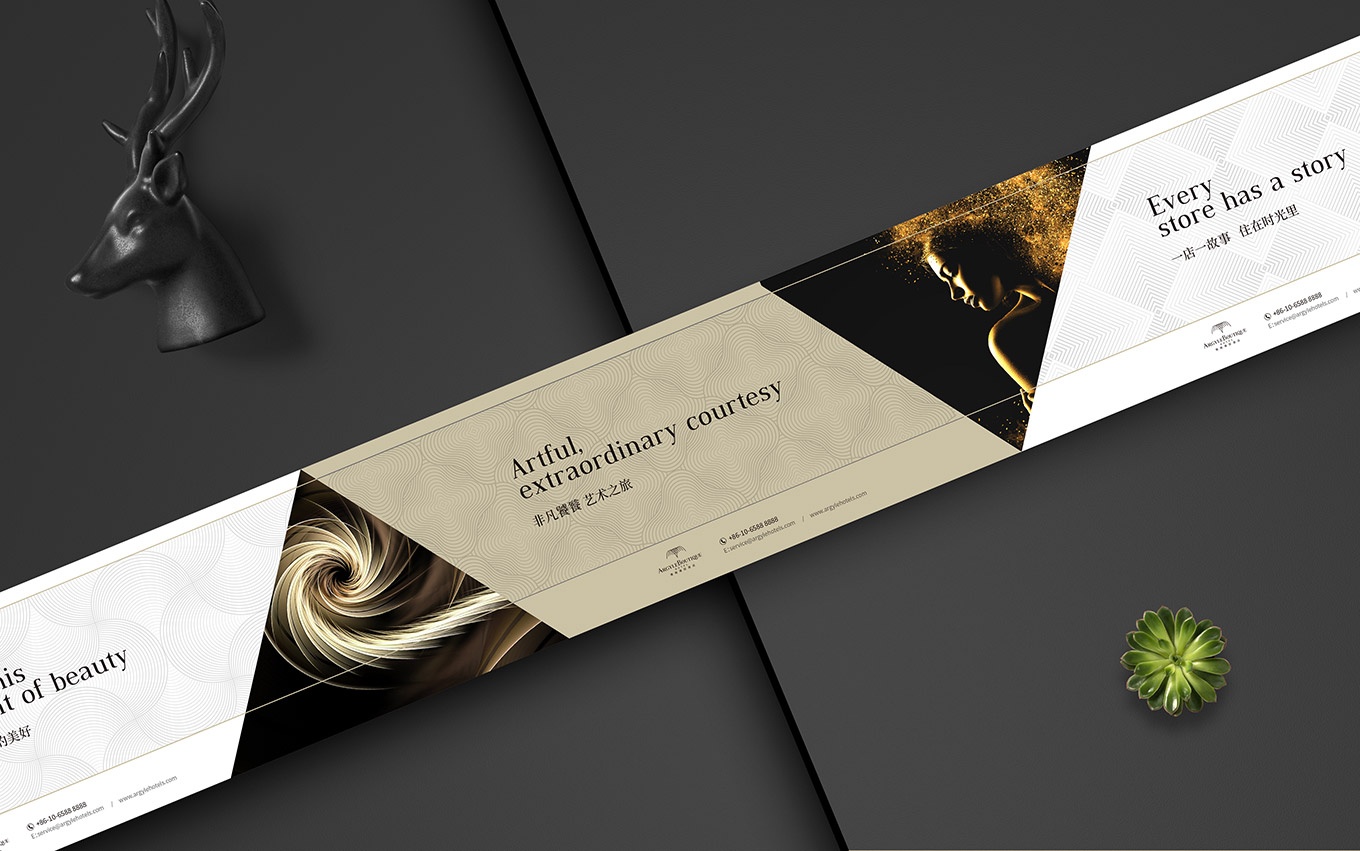地產行業一直是經濟發展中的重要組成部分,其發展趨勢受到多方面因素的影響。在當前的經濟環境下,地產行業呈現出一些明顯的趨勢。,隨著城市化進程的加速,城市人口規模不斷擴大,對住房、商業和辦公空間的需求也在不斷增加。因此,未來地產行業將繼續受益于城市化進程,尤其是在一、二線城市。
,隨著科技的不斷發展和應用,地產行業也在迎來數字化、智能化的時代。智慧城市、智能家居等概念逐漸成為現實,人工智能、大數據、物聯網等技術的應用為地產行業帶來了更多創新和可能性。未來,地產開發商將更加注重智能化、綠色化的建筑設計和運營管理,以滿足市場需求和政府政策的要求。

配圖為廣州vi設計公司作品
地產VI設計是地產項目品牌形象的核心,它承載了項目的理念、文化和價值,是項目與外界進行溝通和傳播的橋梁。一個成功的地產VI設計能夠為項目樹立良好的品牌形象,吸引目標客戶群體,提升項目的市場競爭力。下面將介紹地產VI設計的要點。
1. 品牌識別系統
品牌識別系統是地產VI設計的核心,它包括了項目的標志、標志的運用規范以及相關的視覺元素。標志是項目品牌的象征,應該簡潔明了、易于識別,并能夠準確傳達項目的核心理念。在品牌識別系統中,還需要規定標志的使用方式,包括標志的大小、顏色、間距等規范,以確保在各種場合下都能夠保持品牌形象的一致性。
2. 色彩與字體
色彩和字體是地產VI設計中至關重要的元素,它們能夠直接影響到人們對項目品牌的感知和認知。在選擇色彩和字體時,需要考慮到項目的定位、目標客戶群體以及所傳達的情感和理念。色彩應該與項目的定位相符合,能夠準確表達項目的特點和文化內涵;字體的選擇要簡潔明了,易于閱讀,并且能夠與項目的形象相匹配。
3. 視覺元素
除了標志、色彩和字體之外,視覺元素也是地產VI設計中不可或缺的一部分。視覺元素包括了項目的圖片、圖標、圖形等,它們能夠豐富品牌形象,提升視覺效果,增強品牌的辨識度。在選擇視覺元素時,需要考慮到項目的特點和目標客戶群體的喜好,確保視覺元素能夠與品牌形象相呼應,達到相輔相成的效果。
4. 應用規范
地產VI設計不僅僅是一套靜態的設計方案,更是一套動態的品牌管理系統。在實際應用中,需要根據不同的場景和媒介進行靈活的運用。因此,制定詳細的應用規范至關重要,包括項目的標志使用方式、色彩和字體的搭配規則、視覺元素的運用方法等。只有嚴格遵守應用規范,才能夠保證品牌形象的一致性,提升品牌的影響力和競爭力。
Real estate design plays a pivotal role in shaping both the products offered and the overall industry landscape. Here’s how:
1. Enhancing Aesthetic Appeal: The design of a property greatly influences its aesthetic appeal, attracting potential buyers or tenants. Thoughtfully crafted architecture, interior layouts, and landscaping can elevate the perceived value of a property, making it more desirable in the market.
2. Optimizing Functionality: Effective real estate design prioritizes functionality to meet the needs and preferences of end-users. Whether it's residential, commercial, or industrial spaces, well-designed properties enhance usability, comfort, and convenience, thus increasing their utility and value proposition.
3. Driving Economic Growth: The real estate industry serves as a significant economic driver, and design innovation fuels this growth. Iconic landmarks, mixed-use developments, and sustainable infrastructure not only enhance the urban landscape but also stimulate economic activity by attracting investments, fostering tourism, and creating employment opportunities.
4. Promoting Sustainability: With growing environmental concerns, sustainable real estate design has become imperative. Green building practices, energy-efficient technologies, and eco-friendly materials not only reduce environmental impact but also lower operational costs and enhance long-term value. Sustainable design aligns with evolving consumer preferences and regulatory standards, thus future-proofing properties against obsolescence.

業務咨詢 付小姐

業務咨詢 張小姐

總監微信咨詢 付小姐